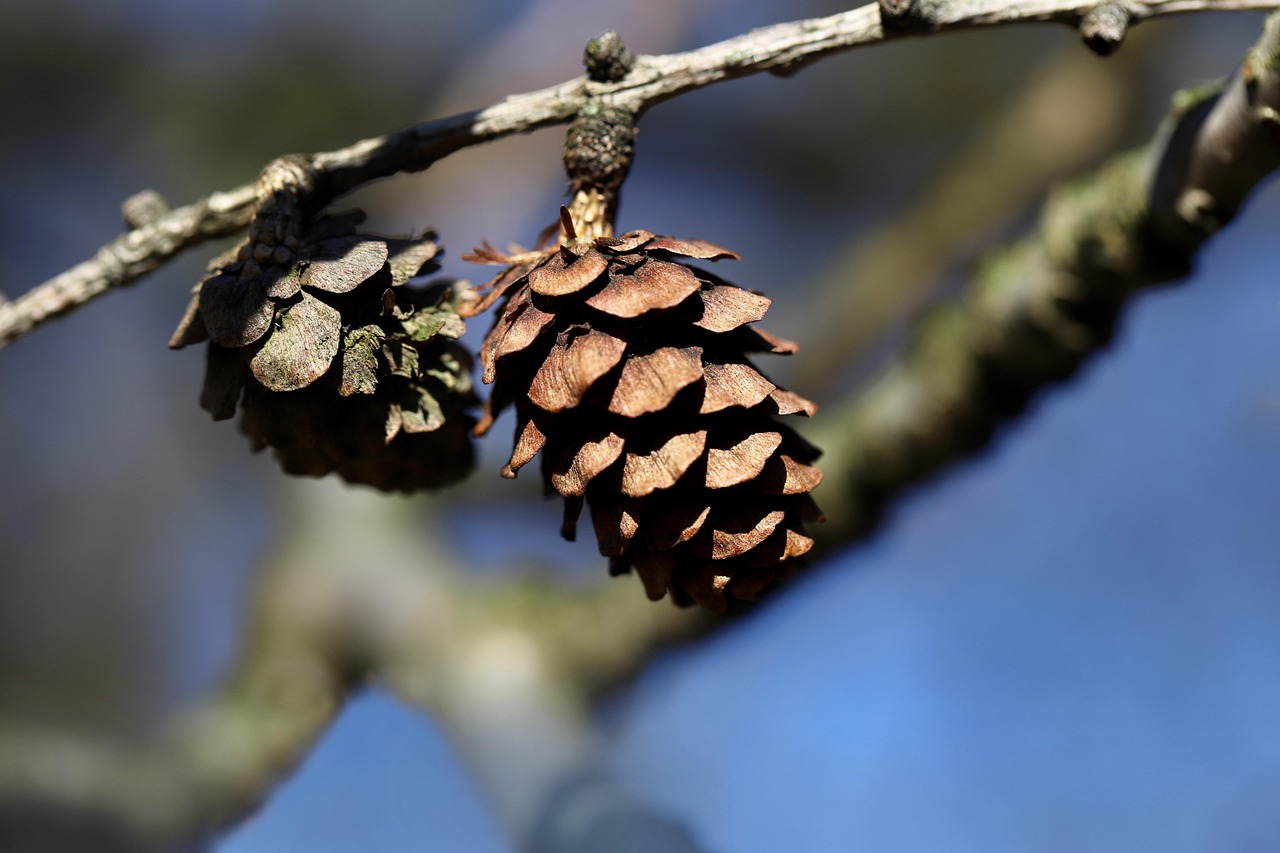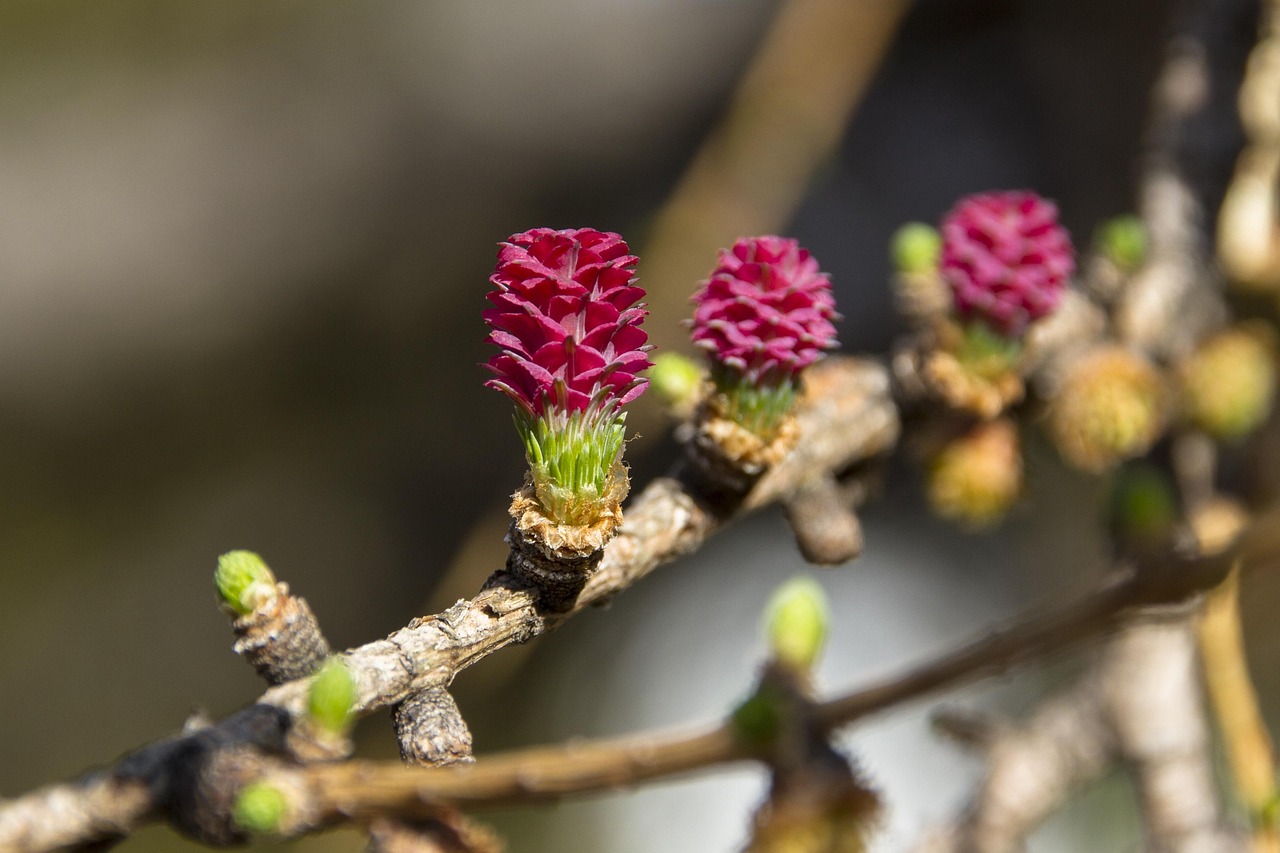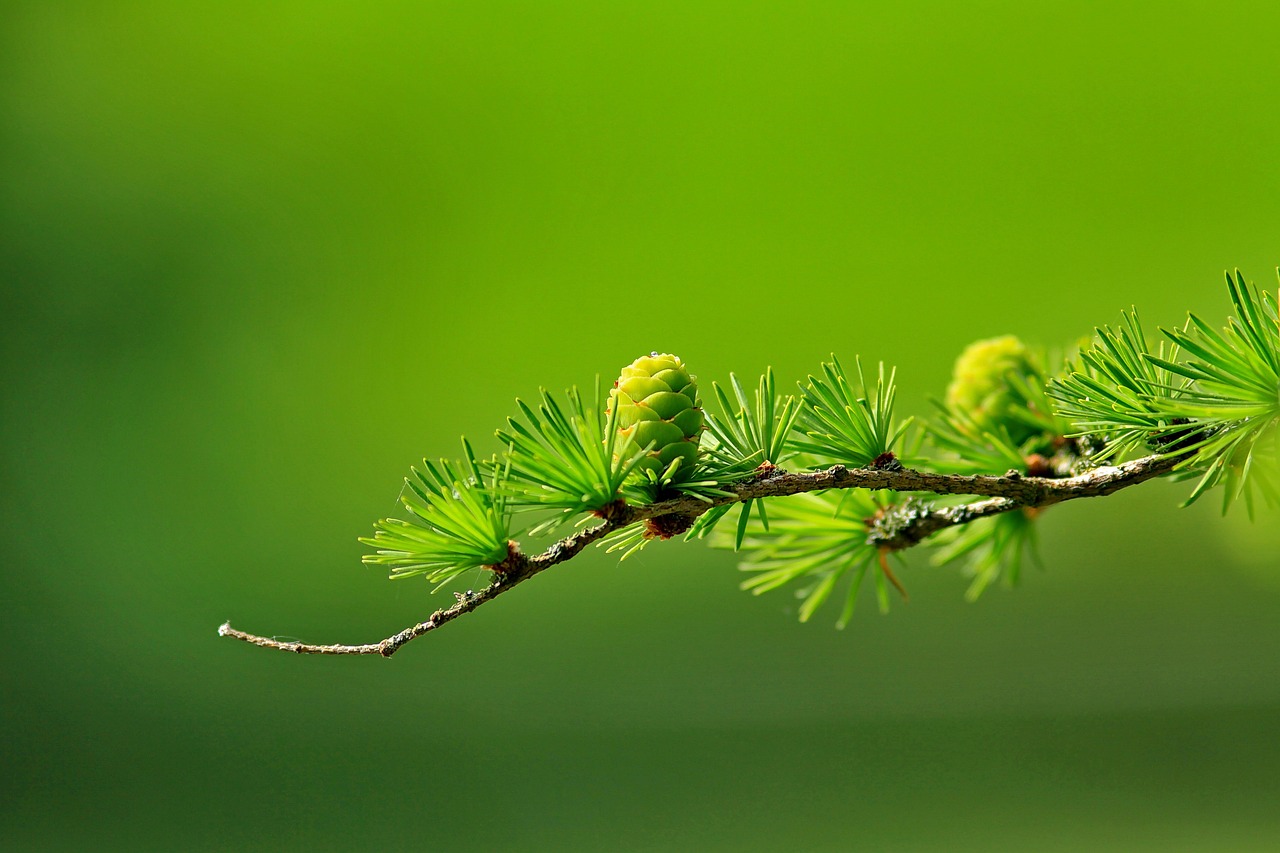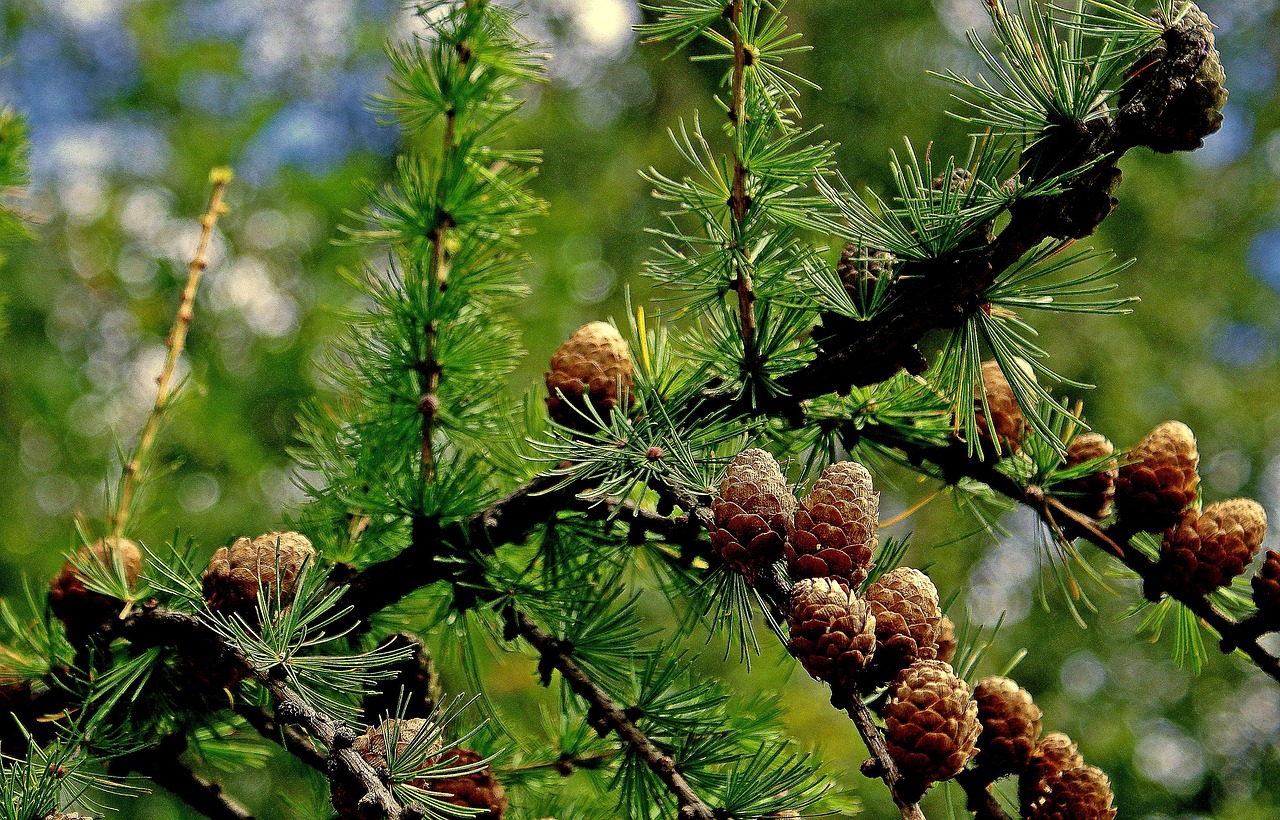Larch trees exhibit a moderate to fast growth rate, making them suitable for both timber and ornamental purposes. Generally, they can grow between 1 to 3 feet per year, depending on the species and environmental conditions.
Understanding Larch Trees
Larch trees, belonging to the genus Larix, are unique conifers that are deciduous, meaning they shed their needles in the fall. This characteristic sets them apart from other conifers, which typically retain their foliage year-round. Larches are known for their attractive, soft needles and vibrant fall color, making them popular choices for landscaping and timber production.

There are several species of larch trees, with the most common being the Eastern Larch (Larix laricina) and the Western Larch (Larix occidentalis). Each species has distinct growth habits and environmental preferences, which can influence their growth rates. Understanding these factors is crucial for anyone interested in cultivating larch trees for timber or ornamental purposes.
Growth Rate Overview
The growth rate of larch trees can vary significantly based on several factors, including species, soil quality, climate, and care practices. On average, larch trees can achieve a height of 40 to 70 feet at maturity, but under optimal conditions, some species can exceed this range.
Here are some key points regarding the growth rates of larch trees:

- Larch trees generally grow rapidly during their early years.
- They can reach heights of 20 feet in as little as 10 years.
- Optimal growing conditions include well-drained soil and full sunlight.
- Regular watering during dry periods can encourage faster growth.
Factors Influencing Growth Rates
Several environmental and biological factors influence how quickly larch trees grow. Understanding these factors can help in selecting the best site for planting and ensuring healthy growth.
Species Differences
The two primary species of larch exhibit different growth patterns. The Eastern Larch tends to grow faster in moist, acidic soils while the Western Larch prefers drier conditions and can adapt to a wider range of soils. Knowing the specific needs of each species can lead to better outcomes in both timber and ornamental applications.
Soil Quality
Soil plays a critical role in the growth of larch trees. Well-drained soils rich in organic matter will support quicker growth rates. Poorly drained soils may lead to root rot and slower growth. It is essential to assess soil conditions before planting.

Climate Conditions
Larch trees thrive in cooler climates. They are typically found in regions with cold winters and moderate summers. Excessive heat or humidity can stifle growth and make trees more susceptible to diseases.
Care Practices
Proper care can significantly enhance the growth rate of larch trees. Regular pruning can help maintain tree health by removing dead or diseased branches. Fertilizing with a balanced fertilizer can also promote robust growth, especially during the early years.
| Species | Average Height at Maturity | Growth Rate (Feet per Year) | Optimal Soil Type |
|---|---|---|---|
| Eastern Larch (Larix laricina) | 40-50 feet | 2-3 feet | Moist, acidic |
| Western Larch (Larix occidentalis) | 50-70 feet | 1-2 feet | Drier, well-drained |
Understanding these factors will help you make informed decisions whether you are growing larch trees for timber production or as ornamental features in your landscape. By selecting the right species and providing optimal care, you can maximize their growth potential.

Benefits of Larch Trees
Larch trees offer numerous benefits, both as timber sources and ornamental features in landscaping. Their unique characteristics and adaptability make them valuable in various settings. Understanding these benefits can help landowners and gardeners decide how best to utilize larch trees in their projects.
Timber Production
Larch wood is highly regarded for its durability and resistance to decay. It is commonly used in construction, furniture making, and outdoor applications. Here are some key attributes of larch timber:
- Durability: Larch wood is naturally resistant to rot, making it an excellent choice for outdoor use.
- Workability: The wood is relatively easy to work with, allowing for smooth finishes and intricate designs.
- Aesthetic Appeal: Larch wood has a beautiful grain pattern and rich color, enhancing the visual appeal of finished products.
- Cost-Effective: Compared to other hardwoods, larch often comes at a lower price point while maintaining quality.
Ornamental Uses
In addition to their timber value, larch trees serve as stunning ornamental plants. They can be used in various landscape designs due to their attractive features:
- Seasonal Color: Larch trees display vibrant yellow foliage in the fall, creating a stunning visual display in any landscape.
- Unique Form: Their conical shape adds architectural interest to gardens and parks.
- Wildlife Habitat: Larch trees provide shelter and food for various wildlife, including birds and small mammals.
Planting and Establishing Larch Trees
Successful growth of larch trees begins with proper planting techniques. When establishing larch trees, several factors must be considered to ensure optimal growth.
Selecting the Right Location
The location for planting larch trees should be carefully chosen based on environmental conditions. Here are some tips for selecting the right site:
- Choose a location that receives full sunlight for most of the day.
- Avoid areas with standing water or poor drainage.
- Consider the proximity to other plants and structures that may compete for nutrients or block sunlight.
Soil Preparation
Before planting larch trees, prepare the soil to create an ideal growing environment. Follow these steps:
- Test the soil pH to ensure it falls between 5.5 and 7.0, which is suitable for larch trees.
- Till the soil to a depth of 12-18 inches to improve aeration and drainage.
- Add organic matter, such as compost or well-rotted manure, to enrich the soil.
Planting Method
Once the site and soil are prepared, follow these guidelines for planting larch trees:
- Dig a hole that is twice as wide as the root ball and slightly shallower than its height.
- Place the tree in the hole, ensuring that the root collar is level with the surrounding soil.
- Backfill the hole with soil and water thoroughly to eliminate air pockets.
- Add mulch around the base to retain moisture and suppress weeds.
Caring for Larch Trees
Proper care is essential for maintaining healthy larch trees. Here are some care practices to consider:
Watering
Larch trees require regular watering, especially during their first few years of growth. Ensure that they receive about an inch of water per week, either through rainfall or supplemental irrigation. Adjust watering based on weather conditions.
Pruning
Pruning helps maintain tree health and shape. Follow these guidelines for effective pruning:
- Remove any dead or diseased branches to prevent the spread of pests and diseases.
- Aim to prune during late winter or early spring before new growth begins.
- Maintain a central leader to promote a strong structure and balanced canopy.
Pest Management
Larch trees can be susceptible to pests such as aphids and bark beetles. Monitor your trees regularly for signs of infestation. If detected, consider using organic pesticides or introducing beneficial insects that prey on harmful pests.
Caring for larch trees involves attention to their specific needs. By providing adequate water, pruning appropriately, and managing pests, you can ensure thriving trees that offer beauty and utility in your landscape or timber production efforts.
Common Diseases Affecting Larch Trees
Larch trees, while generally resilient, can be affected by various diseases that may impact their health and growth. Understanding these diseases and their symptoms is crucial for effective management and care.
Fungal Diseases
Several fungal diseases can pose a threat to larch trees. Here are some of the most common:
- Phytophthora Root Rot: This disease thrives in wet, poorly drained soils. Symptoms include yellowing of needles, branch dieback, and a general decline in tree vigor.
- Needle Cast: Caused by several fungal species, needle cast leads to premature needle drop. Affected trees will show brown, discolored needles, especially in the lower canopy.
- Larch Canker: This disease is characterized by cankers on branches and stems. Infected areas may ooze sap and show discoloration. It can lead to branch dieback if not managed promptly.
Bacterial Diseases
Bacterial infections can also affect larch trees, though they are less common than fungal diseases. Symptoms may include:
- Bacterial Blight: This condition results in dark lesions on the needles and can cause premature needle drop. Affected trees may exhibit stunted growth.
Disease Management Strategies
Effective management of diseases in larch trees involves a combination of prevention and intervention strategies. Here are some recommended practices:
- Maintain Healthy Soil: Ensuring well-drained soil and avoiding overwatering can help prevent root rot.
- Monitor Trees Regularly: Inspect your larch trees frequently for early signs of disease. Early detection is key to successful treatment.
- Prune Infected Areas: If you notice any diseased branches or needles, prune them immediately to prevent the spread of infection.
- Use Fungicides or Bactericides: In severe cases, applying appropriate chemical treatments may be necessary. Always follow label instructions carefully.
Environmental Considerations for Larch Trees
Larch trees are adapted to specific environmental conditions that influence their growth and health. Understanding these considerations is essential for successful cultivation.
Climate Needs
Larch trees thrive in cooler climates with distinct seasons. They are typically found in regions that experience cold winters and moderate summers. Here are some climate-related factors that affect their growth:
- Temperature: Larches prefer temperatures that range from 60°F to 75°F during the growing season. They can tolerate cold temperatures but may struggle in extreme heat.
- Humidity: Moderate humidity levels are ideal. Excessively humid conditions can promote fungal diseases.
Sunlight Requirements
Larch trees require full sunlight for optimal growth. They typically need at least six hours of direct sunlight each day. Insufficient light can lead to weak growth and increased susceptibility to pests and diseases.
Soil Conditions
As mentioned previously, larches prefer well-drained, acidic soils rich in organic matter. Soil conditions can vary, so it is important to monitor pH levels and amend soil as needed. Here are some soil types favorable for larch growth:
- Sandy Loam: This soil type provides good drainage while retaining adequate moisture.
- Ash or Clay Loam: These soils can also support larch trees if properly amended with organic matter.
Propagation Methods for Larch Trees
Propagation of larch trees can be achieved through various methods, each with its advantages and challenges. Understanding these methods can help you choose the best approach for your needs.
Seed Propagation
Propagating larch trees from seeds is a common method. Here’s how to do it:
- Seed Collection: Collect seeds from mature cones in late summer or fall when they begin to open.
- Stratification: Seeds require cold stratification for germination. Place them in a moist medium in the refrigerator for about 30 days.
- Sowing Seeds: After stratification, sow seeds in well-drained soil outdoors or in seed trays indoors.
- Watering: Keep the soil consistently moist until seeds germinate, usually within a few weeks.
Vegetative Propagation
Larch trees can also be propagated through cuttings. This method often results in faster establishment compared to seed propagation:
- Selecting Cuttings: Choose healthy, semi-hardwood cuttings in late spring or early summer.
- Treatment: Dip the cut end in rooting hormone to encourage root development.
- Potted Cuttings: Place cuttings in a pot with a well-draining soil mix and water thoroughly.
- Mist System: Using a mist system can help maintain humidity around the cuttings until roots develop.
By understanding propagation methods, you can effectively grow new larch trees either for timber production or as ornamental features in your landscape.
Environmental Impact of Larch Trees
Larch trees play a significant role in their ecosystems, contributing to both environmental health and biodiversity. Understanding these impacts can enhance the appreciation of larch trees in timber production and ornamental landscaping.
Carbon Sequestration
Like all trees, larches absorb carbon dioxide from the atmosphere, helping to mitigate climate change. They store carbon in their biomass and soil, which is crucial for reducing greenhouse gases. The rapid growth rate of larch trees allows them to sequester carbon efficiently during their early years.
Soil Improvement
Larch trees contribute to soil health through their leaf litter, which adds organic matter and nutrients to the soil as it decomposes. This process enhances soil structure, promotes microbial activity, and improves water retention. Healthy soils support diverse plant life and help prevent erosion.
Wildlife Habitat
Larch trees provide essential habitat for various wildlife species. Their dense canopies offer shelter for birds and small mammals, while their foliage serves as a food source during specific seasons. Additionally, larch forests are often home to numerous insects that are vital for pollination and as part of the food web.
Challenges in Cultivating Larch Trees
While larch trees are generally resilient, they face certain challenges that may impact growth and health. Awareness of these challenges can help in successful cultivation.
Climate Change Effects
Climate change poses significant risks to the growth and survival of larch trees. Changes in temperature and precipitation patterns can alter their natural habitats, potentially leading to increased stress on these trees. For example, prolonged droughts may affect their growth rates, while warmer winters can disrupt their seasonal cycles.
Pest and Disease Pressure
The prevalence of pests and diseases may increase due to changing environmental conditions. In warmer climates, pests that were once limited by cold temperatures may thrive, posing new threats to larch trees. Continuous monitoring and adaptive management practices will be essential to protect these trees from emerging threats.
Competition from Invasive Species
Invasive plant species can outcompete larch trees for resources such as sunlight, water, and nutrients. It is important to manage surrounding vegetation to ensure that larches can thrive without undue competition. Regular maintenance and monitoring of invasive species are critical for the health of larch populations.
Final Thoughts
Larch trees are remarkable for their rapid growth rates, unique characteristics, and numerous benefits. They serve as valuable sources of timber while enhancing landscapes with their aesthetic appeal. Understanding their growth requirements, care practices, and environmental impacts is essential for successful cultivation.
By choosing suitable species and providing proper care, gardeners and landowners can maximize the potential of larch trees in both timber production and ornamental applications. Furthermore, recognizing the ecological significance of larches can foster a deeper appreciation for these trees within our landscapes.
As we face environmental challenges such as climate change, the role of larch trees in carbon sequestration and habitat provision becomes increasingly important. Cultivating healthy larch populations not only benefits individual growers but also contributes to broader environmental goals. Through thoughtful management and care, larch trees can flourish for generations to come.
